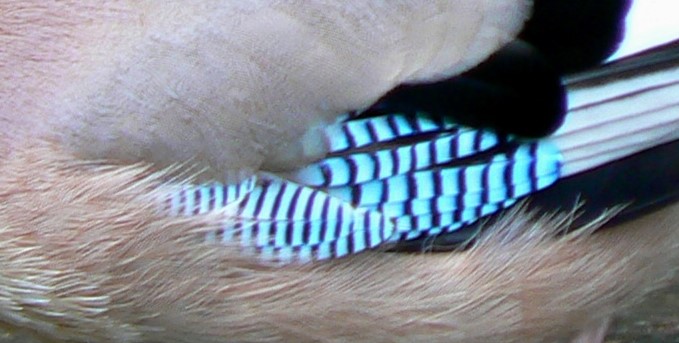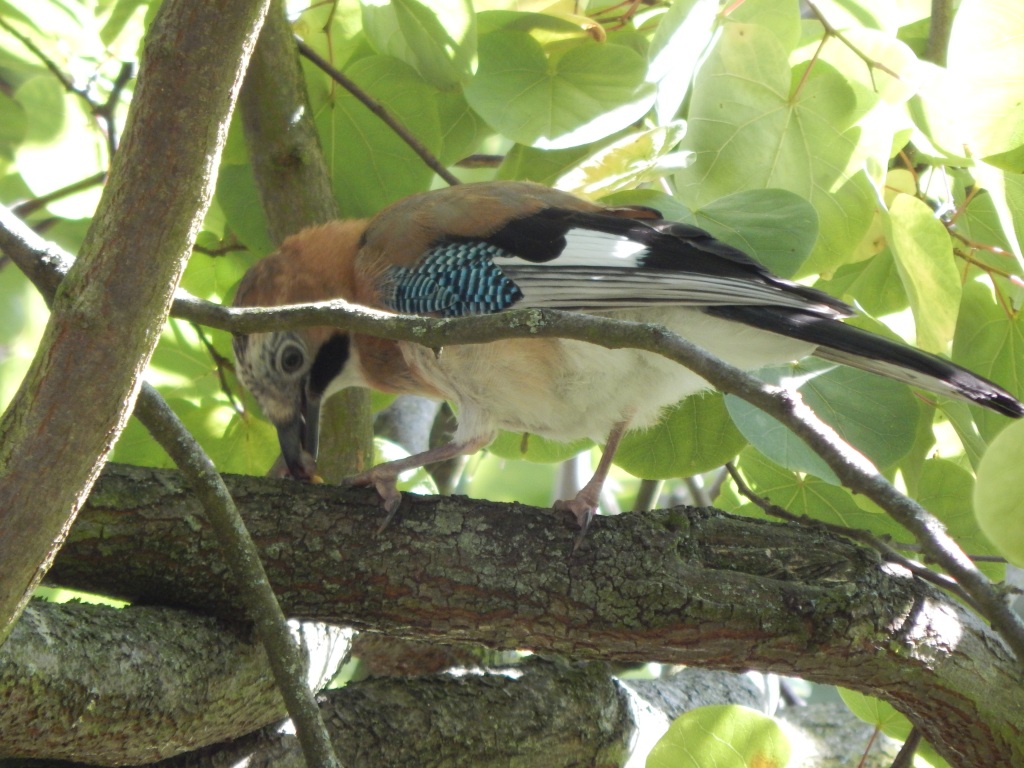
[159] Garrulus glandarius, Jay
Introduction
Garrulus glandarius, the (Eurasian) Jay, is a common and very widespread bird. It is a colourful representative of the Corvid family that has mostly all black species. It is one of my favourite birds.
There are more than fifty birds from ten genera in the Corvid family that are known as Jays, and a few from other unrelated genera. A few species of butterflies in the genus Graphium are also called Jays.
Taxonomy
Kingdom – Animals
Phylum – Chordates
Class – Aves (Birds)
Order – Passeriformes
Family – Corvidae
Subfamily – Corvinae
Genus – Garrulus
Scientific Name – Garrulus glandarius
It was originally called Corvus glandarius.
Name
Jay is a Middle English Word for this bird coming from Old French and cognate with gay, from its colourful appearance.
Garrulus is a Latin word meaning talkative, chattering or noisy (garrulous.) Glandarius is a Modern Latin word relating to acorns.
Description
In the Crow family, Corvidae we have the all black [098] Crow, [099] Rook and Raven; the mostly black [088] Jackdaw; and the black and white [265] Magpie.
So, the Jay is by far the most colourful. It is more closely related to the Magpie than our other British Corvids. Both have relatively long tails.
Over its range, 33 subspecies of Garrulus glandarius are recognized with variations in colour. For our version the main colour is a greyish pink, with black lower back and tail, white vent and a streaked crown of the head. The bill is black, extending to the side of the face. Most striking is the bright turquoise patch with a pattern of dark stripes on the side of the wing.





The Jay is omnivorous and eats invertebrates such as insects, seeds and fruits. In the autumn they will hide acorns and beechnuts for the winter.
Its call is a rattling sound, a bit like a [265] Magpie but much harsher.
Habitat
Garrulus glandarius is common and widespread over all of Europe and much of Asia including the Far East. They like woodland environments particularly [291-2] Oaks. Like [311] Squirrels, they bury acorns and have traditionally been the main medium for the dispersal of oaks.
Because of their preference for trees, they are primarily a rural bird but will visit parks, rural bird feeders and sometimes private gardens.



Other Notes
You may be able to persuade them to visit gardens, especially in winter, by putting out bird feeders with peanuts.
See also
Apart from water birds you won’t find any other such attractive birds in parks and gardens – except maybe a [115] Woodpecker if you are very lucky.

Pingback: [265] Pica pica, Magpie | The Species of Britain
Pingback: [292] Quercus robur, Pedunculate Oak | The Species of Britain